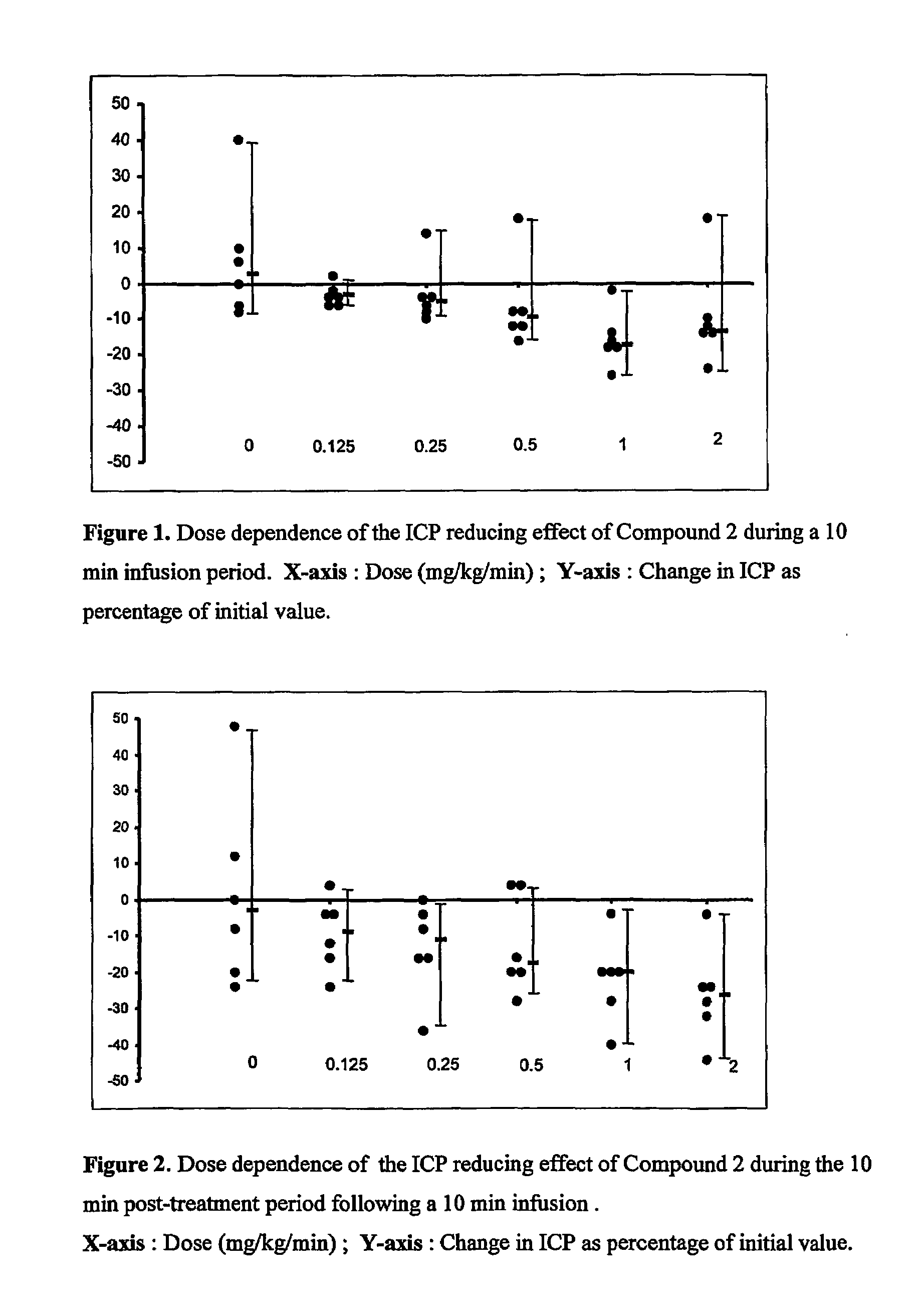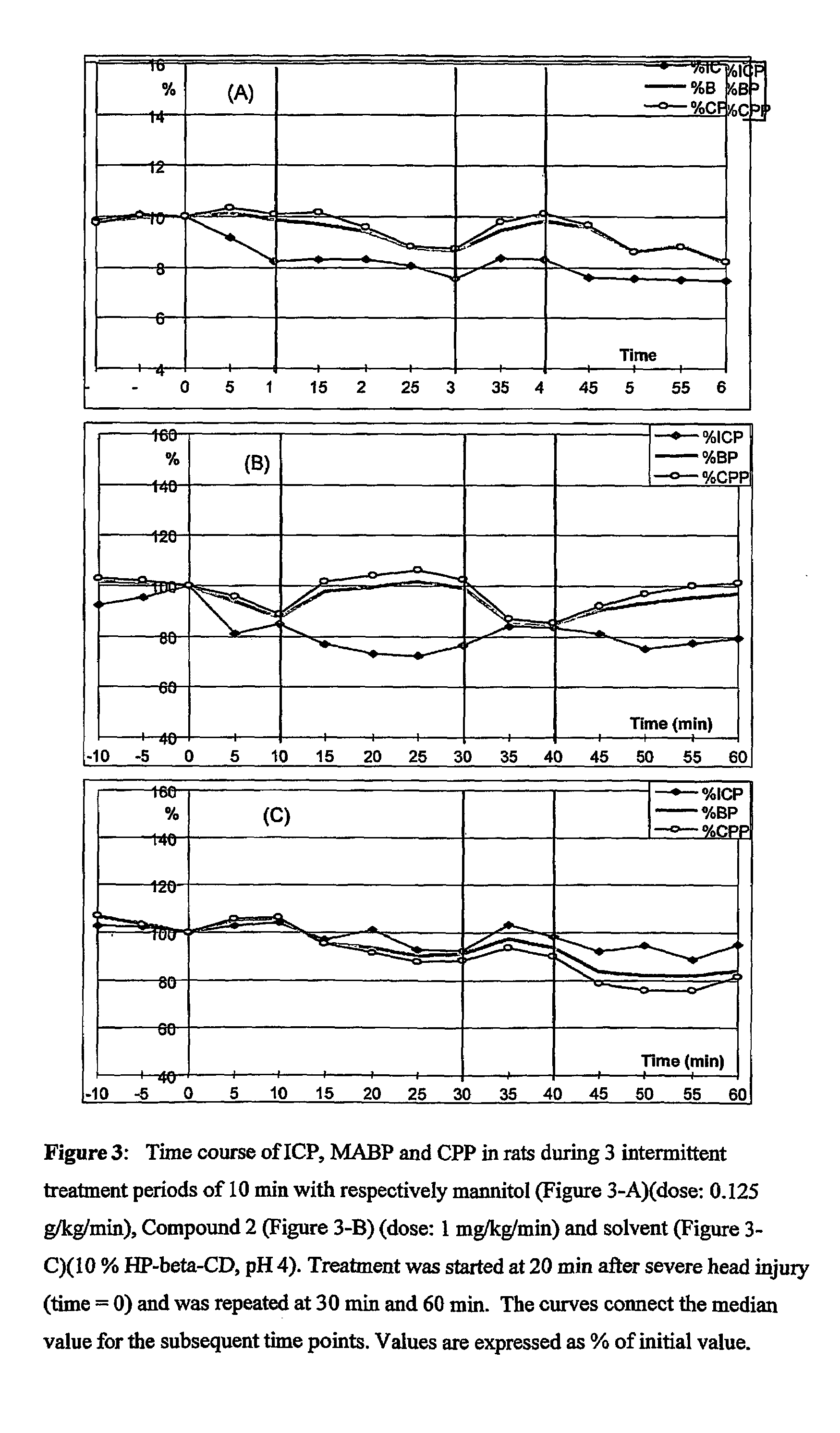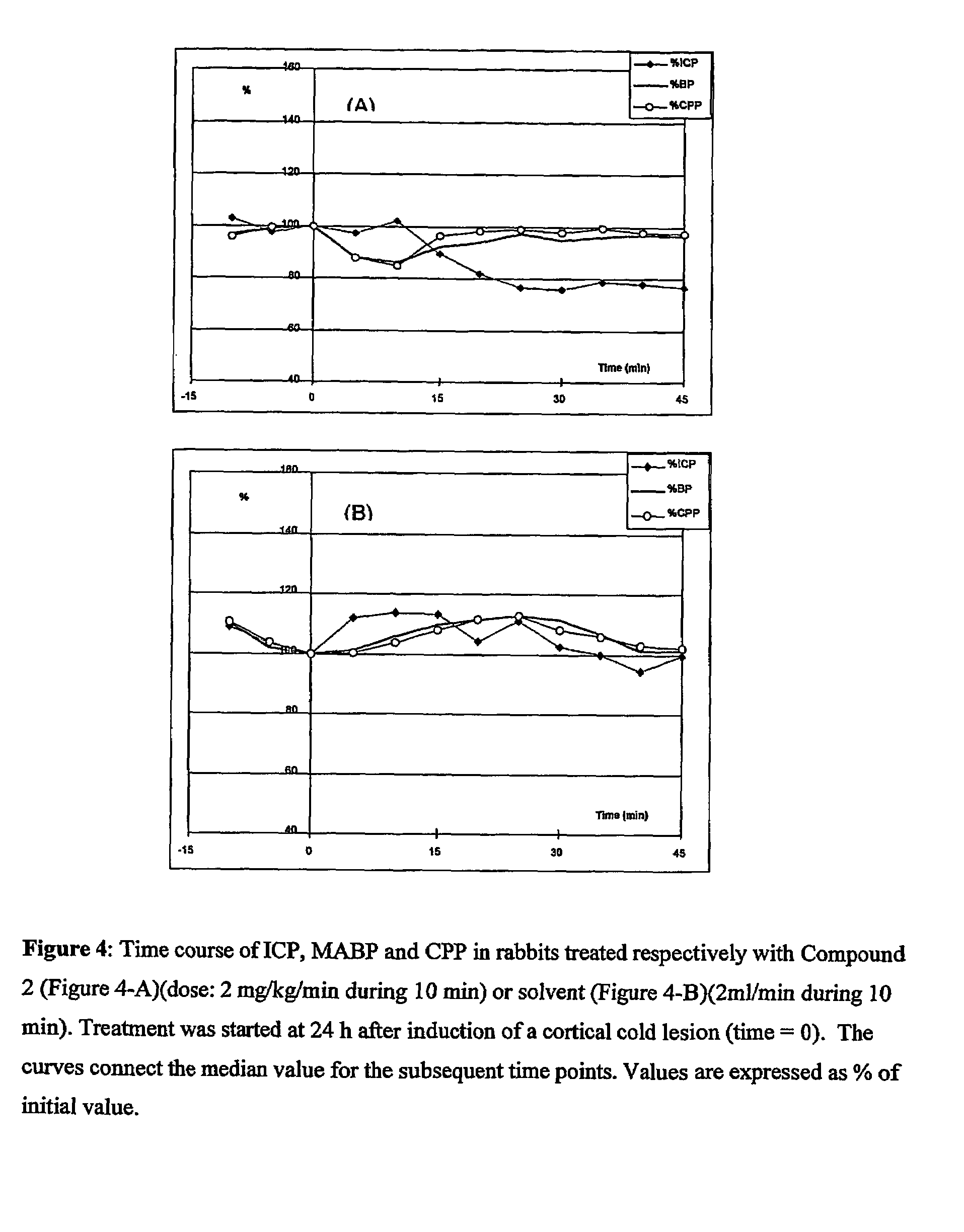Use of anti-histaminics for acute reduction of elevated intracranial pressure
a technology of histamine receptor and anti-histamine, which is applied in the direction of drug composition, immunological disorders, metabolism disorders, etc., can solve the problems of increased ischaemia, infarction, and increased ischaemia, and achieve the prevention and treatment of elevated intracranial pressure and/or secondary ischaemia , the effect of reducing intracranial pressur
- Summary
- Abstract
- Description
- Claims
- Application Information
AI Technical Summary
Benefits of technology
Problems solved by technology
Method used
Image
Examples
example a1
[0084]
[0085]Use dry glassware. A mixture of (methoxymethyl)triphenylphosphoniumchloride (0.35 mol) in THF p.a.(mol. sieves) (2 l) was stirred at −50° C. under N2 flow. BuLi, 2.5M / hexane (0.35 mol) was added dropwise and the mixture was stirred at −25° C. for 30 min. A solution of 1,2-bis(phenylmethyl)-4-piperidinone (0.35 mol) in THF was added dropwise at −25° C. The mixture was allowed to warm to room temperature, then stirred at room temperature overnight and decomposed with water. The organic solvent was evaporated. The aqueous concentrate was extracted with CH2Cl2. The organic layer was separated, dried (MgSO4), filtered and the solvent was evaporated. The residue was purified by column chromatography over silica gel (eluent: CH2Cl2 / CH3OH 97.5 / 2.5). The pure fractions were collected and the solvent was evaporated. Yielding: 121 g of 4-(methoxymethylene)-1,2-bis(phenylmethyl)piperidine enantiomeric mixture (intermediate 1) (100%).
[0086]
[0087]A mixture of intermediate 1 (0.35 mol)...
example a2
[0094]
[0095]Use dry glassware. A mixture of DIPA (0.22 mol) in THF p.a.(previously dried on mol. sieves) (1400 ml) was stirred at −70° C. under N2 flow. BuLi 2.5M (0.185 mol) was added dropwise and the mixture was stirred at −70° C. for 15 min. 1-(phenylmethyl)-1H-benzimidazole (0.185 mol) dissolved in THF was added dropwise at −70° C. and the mixture was stirred at −70° C. for 1 hour. Intermediate 2 (0.185 mol) dissolved in THF was added dropwise at −70° C. The mixture was stirred at −70° C. for 1 hour, then brought slowly to room temperature, stirred at room temperature overnight and decomposed with H2O. The organic solvent was evaporated. The aqueous concentrate was extracted with CH2Cl2. The organic layer was separated, dried (MgSO4), filtered and the solvent was evaporated. The residue was purified by column chromatography over silica gel (eluent: CH2Cl2 / CH3OH 95 / 5). The pure fractions were collected and the solvent was evaporated. Yielding: 91 g of intermediate 6 (98%).
[0096]
[...
example a3
[0100]
[0101]A mixture of DIPA (0.1 mol) in THF (100 ml) was stirred under N2 flow. The mixture was cooled to −70° C. and BuLi, 2.5M / hexane (40 ml) was added portionwise. The temperature was allowed to reach −30° C., while stirring for 10 min. The mixture was cooled to −70° C. A solution of 1-(phenylethyl)-1H-benzimidazole (0.1 mol) in THF (50 ml) was added dropwise at this temperature and the mixture was stirred for 2 h at −70° C. Ethyl 4-formyl-1-piperidinecarboxylate (0.1 mol) was added dropwise and the mixture was stirred for 30 min at −70° C. The mixture was allowed to reach room temperature and stirring was continued for 30 min. The mixture was decomposed with water, then evaporated. The residue was stirred in water, and this mixture was extracted with CH2Cl2. The organic layer was separated, dried, filtered and the solvent was evaporated. The residue was purified by column chromatography over silica gel (eluent: CH2Cl2 / CH3OH 98 / 2). The pure fractions were collected and the sol...
PUM
| Property | Measurement | Unit |
|---|---|---|
| time | aaaaa | aaaaa |
| time | aaaaa | aaaaa |
| time | aaaaa | aaaaa |
Abstract
Description
Claims
Application Information
 Login to View More
Login to View More - R&D
- Intellectual Property
- Life Sciences
- Materials
- Tech Scout
- Unparalleled Data Quality
- Higher Quality Content
- 60% Fewer Hallucinations
Browse by: Latest US Patents, China's latest patents, Technical Efficacy Thesaurus, Application Domain, Technology Topic, Popular Technical Reports.
© 2025 PatSnap. All rights reserved.Legal|Privacy policy|Modern Slavery Act Transparency Statement|Sitemap|About US| Contact US: help@patsnap.com



